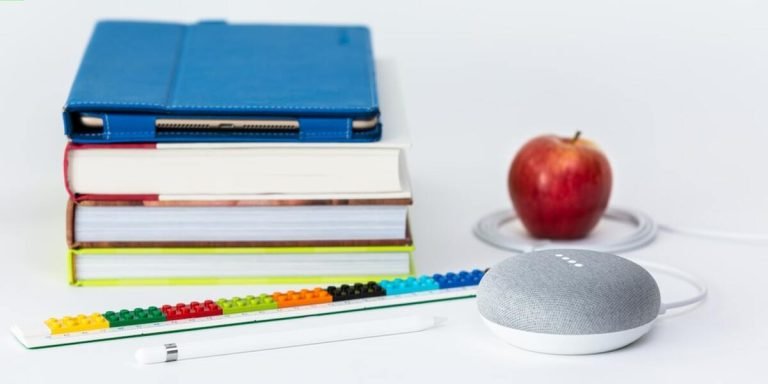Activities for Reading Comprehension: Enhancing Understanding Among Young Learners
Understanding and comprehension are two primary pillars required to build a successful education. However, for young learners, this can often be a daunting task especially when it comes to reading. This is where ‘activities for reading comprehension’ play an important role in the process of homeschooling & education.
These activities not only make learning fun but also enhance understanding among children by encouraging them to delve deeper into what they read. Moreover, these exercises are pivotal aids that help parents and educators foster creativity while improving their child’s literary skills at home or within educational frameworks respectively.
Did you know?
Did you know? According to the National Reading Panel, guided oral reading strategies are effective in improving children’s comprehension abilities. This includes activities like ‘paired reading’ where an adult and child read a text together.
Implementing Interactive Activities to Boost Reading Comprehension at Home
Encouraging reading comprehension at home doesn’t have to be a mundane task. In this digital age and more so in the year 2023, there are numerous fun-filled interactive activities parents can engage their children with, designed not only to improve literacy skills but also build a genuine love for reading. These engaging activities make it easier for your little ones to understand what they read and absorb information better.
One such activity involves role-playing where family members could take turns playing characters from stories or books. The beauty of role play is that it adds a touch of reality while enabling kids to relate events in text with real-life experiences, effectively enhancing understanding and memory recall abilities.
Visual aids too present an excellent opportunity when aiming towards achieving reading comprehension goals at home. Several online platforms offer colorful comics and graphic novels intended for educational purposes which can lead children into exploring complex ideas imaginatively through vivid illustrations coupled with text.
Notably though, nothing beats the classic ‘question-and-answer’ strategy after every chapter or story session that compels young minds into thinking critically about plot developments or character arcs thus strengthening their grasp on details within texts.
Regardless of which approach you adopt, establishing atmosphere conducive enough where exploration isn’t frowned upon can drastically amplify your child’s ability regarding effective comprehension all the while nurturing an unswayable affinity toward learning new things making education intrinsically rewarding than compulsive chores previously perceived as: Home Schooling & Education reimagined!
Crafting Engaging Story Maps for Enhanced Narrative Understanding
Story mapping is an exciting and innovative method parents can use to boost their child’s reading comprehension while learning from home. This technique involves breaking down the narrative into identifiable parts, including characters, settings, conflicts and resolutions. Doing so provides children with a more comprehensive understanding of plot development and structure.
Firstly, it’s essential to select an engaging story suitable for your child’s age group that contains clear components easily relatable on the map. Ensure you choose books containing numerous themes or complex narratives as they provide rich content for discussion during this interactive activity.
Once selected, read through the story together with your child before beginning any activities related to reading comprehension like crafting a Story Map. As you progress through each chapter or section of the book aloud have brief discussions at key points in order to get them accustomed to identifying individual elements later necessary when building their own maps.
The actual process begins post-reading session where kids are now tasked with creating their very own imaginative Story Maps! Encourage them by using materials available around your home such as poster board paper markers colored pencils even scrapbooking resources if accessible; anything which will help bring out creative expressions helping everyone involved really grasp what happened throughout these adventures shared between pages much loved literature piece!
Utilizing Online Quizzes and Games for Real-Time Learning Assessment
In today’s digital era, the implementation of interactive practices like online quizzes and games can tremendously boost your child’s reading comprehension. These activities serve as a significant part in home education, which enables parents to focus on their child’s learning process while assessing it simultaneously.
A valuable tool amongst activities for reading comprehension is an online quiz. This dynamic approach encourages children to engage with the content they are studying actively. Each question from these quizzes presents a fun challenge that calls for critical thinking — fostering problem-solving skills along with boosting reading understanding.
To enhance its effectiveness further, try integrating topics relevant to what your kids love or find interesting. For instance, if your little one has an admiration for nature — design questions centered around animals or plants perhaps!
On top of quizzes, educational games also play a vital role in enhancing reader engagement at home by providing immediate results about their skill level appropriateness without feeling pressurized through conventional testing methods.
For example: Crosswords and word search puzzles not only aid vocabulary enhancement but also help develop context deduction technique over time – contributing positively towards improving comprehensive ability within young readers.
Concentrating on implementing such games would offer them versatile ways to explore language arts themselves creatively – securing overall linguistic proficiency going hand-in-hand with bolstering mental agility eventually; thereby transforming this journey into more than just mastering grammar rules alone!
Incorporating Multisensory Techniques into Your Homeschool Reading Curriculum
Harnessing the power of multisensory techniques in your homeschool reading curriculum can be a game-changer for kids. This approach goes beyond traditional reading methods, allowing children to engage all their senses while learning, leading to improved comprehension and enhanced focus. Multisensory activities effectively bridge the gap between diverse learners with varying cognitive abilities by leveling out differences that may exist.
Embarking on this adventure requires creativity as well as an openness towards experimentation within familiar educational confines. You could start simple using textured alphabet cards or flashcards paired with phonetic sounds, aiming at blending visual and auditory stimulation for deeper memory imprinting rather than just relying on rote memorization routes. Or consider tactile letter tracing exercises coupled with color-coding vowels or consonants in words being read aloud; these serve both kinesthetic (touch) and visual channels whilst simultaneously reinforcing grammar basics subtly.
In 2023’s technologically-savvy world, there are greater opportunities than ever before to incorporate such interactive tools into home education environments seamlessly disrupting traditional pedagogical boundaries without compromising on fun elements essential in childhood learning journeys! From virtual reality applications simulating immersive reading experiences like exploring different story settings firsthand or engaging directly with characters via augmented reality-based books – technology has empowered parents cum educators remarkably!
Kinesthetic Methods to Reinforce Phonics and Vocabulary Retention
Fostering phonics and vocabulary retention is an integral part of a child’s learning journey. To ensure this, kinesthetic methods or physical activities can be seamlessly woven into your homeschool reading curriculum for enhanced results.
One exciting method to use in teaching phonics and bolstering vocabulary skills is the ‘Letter Jump Game’. Draw alphabets on the floor with chalk or tape and instruct your child to jump onto letters that form words when called out loud. This fun activity not only improves their decoding abilities but also enhances their gross motor skills, making it one of the myriad effective activities for reading comprehension at home.
Another engaging way to reinforce spelling and pronunciation is through ‘Word Puzzles’. Create jigsaw-style puzzles from flashcards bearing individual letters. Encourage learners to assemble these cards together creating new words each time – essentially boosting word recognition accuracy while ensuring engagement using tactile stimuli.
Moreover, children find hands-on playdough modeling thrilling! Combine education with entertainment by encouraging them create distinct letter shapes using play-doh- amping up those fine motor development while securing essential language foundations!
Lastly, implement dramatic role-play sessions where students act-out nursery rhymes or short stories focusing primarily upon employing new unique terms they’ve learned – combining movement memory techniques within cognitive understanding remarkably boosts term memorization among youngsters who are otherwise static readers.
Auditory Exercises Tailored to Improve Listening Skills and Interpretation
Listening is a key factor in enhancing reading comprehension. It greatly impacts your child’s ability to grasp the essence of stories, understand nuances and language patterns, and interpret meanings correctly. Therefore, our focus will be on activities for reading comprehension that promote auditory skills.
Firstly one potent strategy could be ‘Interactive Storytelling’. This involves parents or educators narrating a story with emphasis on voice modulation, intonation changes and expressive sounds to make it engaging for children. Afterwards ask questions about the narration which require them to recall specific details from what they’ve heard encouraging critical listening.
Next is ‘Audiobooks’, another excellent tool as it combines hearing with visualization process thus challenging their imagination while improving interpretation prowess simultaneously. These tools are abundantly available online catering to various age groups making these great options as home-schooling resources in 2023.
Podcasts designed specifically for kids can also enlist into this plan focusing especially on educational content – science facts or history podcasts being good choices here – amplifying both general knowledge base as well enhancing listening faculty at once.
Sound matching games like “I Spy With My Little Eye” where you describe an object using its sound characteristics instead of visual clues would help sharpening auditory descriptors understanding adding fun quotient along learning curve too!
Structuring Effective Read-Aloud Sessions for Improved Literacy Development
Reading aloud is a time-tested method that has proven to be highly effective in enhancing literacy development among children. In the age of homeschooling and online learning, this practice’s relevance cannot be overstated. Reading comprehension activities can dramatically improve by systematically structuring read-aloud sessions at home.
The first step is choosing engaging and level-appropriate books for your child. This decision directly impacts their enthusiasm towards reading as well as their understanding of the text. Following this, it’s essential to create an inviting reading environment— free from distractions—that encourages your child to immerse themselves fully in each story.
Further on while conducting these sessions, parents should adopt interactive methods such as pausing after every few lines or pages to discuss what happened with their youngsters, prompting them with questions relevant to the story line helps foster critical thinking skills and enhances memory retention leading towards better comprehension results.
When you integrate structured read-alouds into your education routine effectively through thoughtful planning and execution; not only will you witness improvement in your child’s vocabulary but also see noticeable growth in their cognitive processing abilities over time.
This process isn’t about rushing through multiple books within a short period; rather it’s appreciating each word crafted by authors enabling kids’ imaginations fly freely across unchartered territories encouraging self-confidence building curiosity – all pillars fostering lifelong love for learning. Cherish this invaluable journey shaping young minds ensuring they grow embracing literature venerating world knowledge carrying passion forward limitless horizons awaiting exploration!
Role-Playing Scenarios That Encourage Analytical Thinking and Discussion
The beauty of role-play lies in its inherent versatility. It’s not just about playing pretend, but it’s also about diving deeper into narratives, comprehending characters better, and enhancing interpretation skills.
So how do we get started with this exciting method? Let’s dive right into some well-crafted strategies designed specifically for homeschooling parents and educators.
1. Create Character-based Scenarios: Start by picking up intriguing characters from books your child has recently read or currently studying at home-school classes. Encourage them to step into these character’s shoes and think as they would have done under specific situations.
2.Utilize Real-world Situations: You could create real-life based scenarios where kids need to apply their learning from texts. For instance, if they’ve been learning about environmental conservation concepts lately- bring out a situation stressing on such matters necessitating problem-solving or decision-making abilities.
3.Game-like Activities: Transform ordinary games like ‘Snakes & Ladders’ or ‘Monopoly’ – introducing elements that align with the subject matter being studied – be it science fiction literature or world history facts! Such adaptation boosts both fun quotient along with promoting knowledge absorption effectively.
H 3 Emphasizing Paired Reading To Foster Peer Learning And Confidence
Paired reading is an incredibly valuable tool when it comes to literacy development in children. Not only does this method utilize activities for reading comprehension, but it also supports peer learning and instills a sense of confidence among the youngsters.
Incorporate paired reading sessions into your child’s homeschooling program to reinforce their understanding of text content. This practice involves two participants sharing a single book; one reads aloud while the other listens attentively, helps correct mistakes if any occur and provides encouragement throughout.
the parent or another student who would typically have better fluency. The listener could be a learner struggling with certain aspects of literacy skills such as pronunciation or word recognition.
Establish guidelines at the beginning so that all parties involved know what’s expected during these exercises for clear communication. For instance, discussing unfamiliar words beforehand can help broaden vocabulary by making new terminology easier to understand.
To further enhance these partnered read-aloud sessions, inject some fun elements like role reversals where listeners get turns being readers and vice-versa within each session promoting active involvement from both sides.
These shared literary experiences will not only improve your child’s language proficiency but also their interpersonal abilities through group collaboration efforts aiding in balanced cognitive growth which is crucial for childhood education today..
Conclusion
In wrapping up, implementing these activities for reading comprehension can make a massive difference in your young learners’ academic journey. Each activity is designed to stimulate learning and improve their ability to dissect information effectively. Remember, the goal isn’t just about teaching them how to read but helping them understand what they’re reading.
Don’t stop here! Browse our website for more invaluable resources on childhood education that will guide you as you navigate this essential phase of your child’s life. Whether it’s parent support or educator tools you seek, we’ve got plenty more where that came from – all created with the aim of making your educational journey less daunting and far more rewarding.







